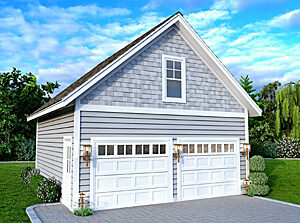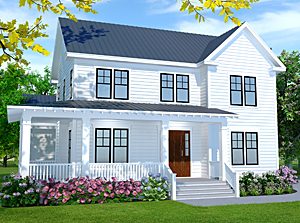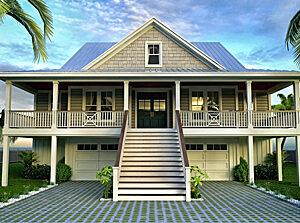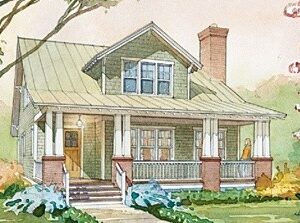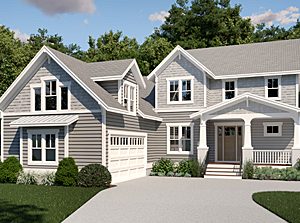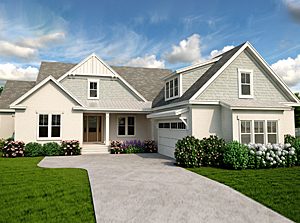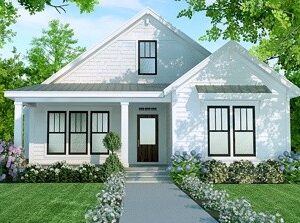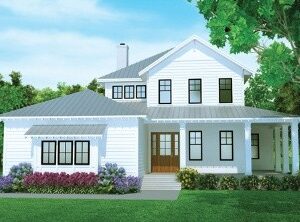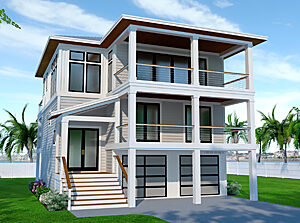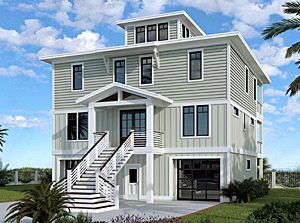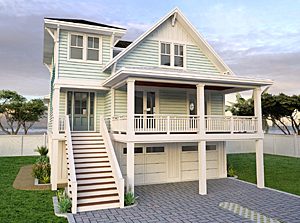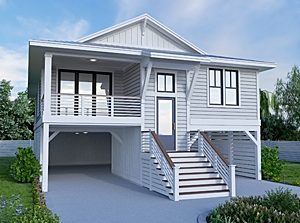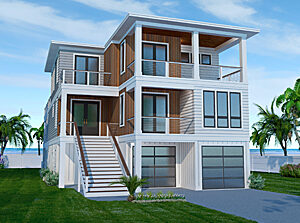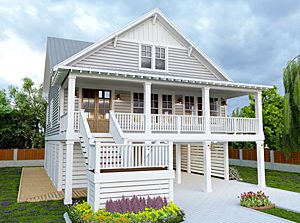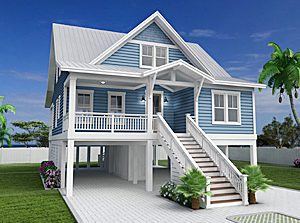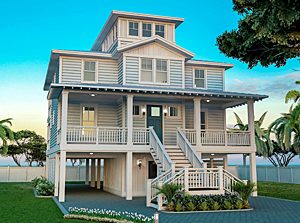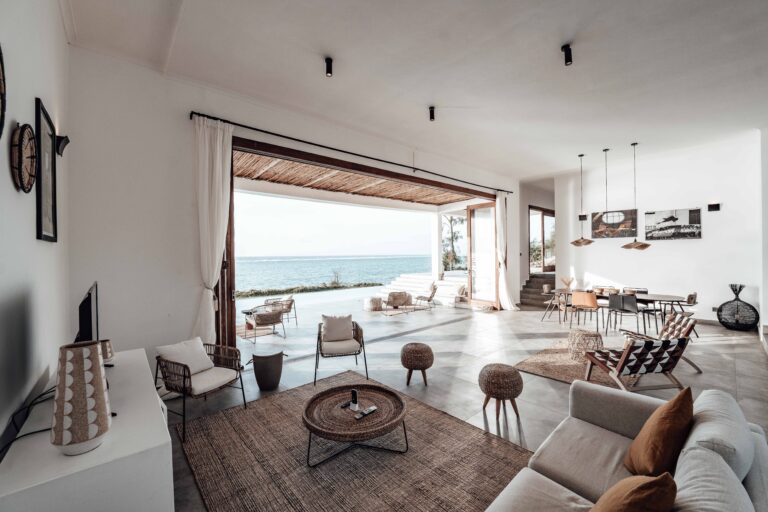A beach house is a dream come true for many property owners. However, before planning your home next to the water, there are a few essential factors to consider to ensure your coastal property stands strong against the elements while providing an idyllic retreat.
With so much to consider, where do you begin? We’ve put together this guide of top tips for you to keep in mind when planning a beach home so you can get started creating a stunning structure that will stand the test of time.
1. Choose the Right Location
It’s true what they say: real estate is all about location, location, location. Location selection for your beach house is paramount to ensuring you have a smart investment in addition to a beautiful, comfortable, and peaceful home. Here are some factors to consider when choosing where to build:
Access to Amenities
A beach house should be close enough to amenities such as grocery stores, restaurants, and healthcare facilities without sacrificing a great neighborhood or water access. Consider researching nearby towns or communities that offer these amenities while still providing easy access to the beach.
Zoning Regulations
It’s important to understand zoning regulations before purchasing land for your beach house. Zoning laws can dictate how close you can build to the water, building height restrictions, impervious coverage limits and other important factors that may impact your design choices.
Environmental Considerations
Building a home close to the water isn’t without its challenges, so knowing what you may be up against as far as environmental considerations is essential. A few things to consider include:
- Flood Zones: Building in a flood zone increases the risk of home damage during storms or hurricanes. Therefore, it’s vital to research whether potential locations fall within designated flood zones by consulting resources like FEMA’s Flood Map Service Center.
- Erosion Control: Beachfront properties are susceptible to erosion caused by wind and waves over time. As such, it may be worth considering a location with natural barriers such as dunes or vegetation that help protect against this issue.
- Tidal Impact: Be aware of tidal patterns in prospective areas. High tides could potentially damage the home’s foundation if not accounted for during construction planning.
Choosing the right location for your beach house is key to ensuring a successful build. By carefully considering these factors, you can select the ideal location for your new home that balances convenience, regulatory compliance, and environmental sustainability.
2. Choosing a Floor Plan
Choosing an efficient and functional floor plan can help you make the most of your life by the beach. Here’s what you need to consider when choosing a floor plan that will support a comfortable living environment that truly embraces the coastal lifestyle.
Open-Concept Living Spaces
An open-concept living space is an excellent consideration for modern homes, especially those by the water. An open-concept design allows for a seamless flow between living spaces while providing ample opportunities to enjoy beautiful views from multiple rooms. Open-concept living spaces also allow you to spend more time with family and friends by removing physical boundaries between the kitchen, dining area, and living room, and can support better airflow throughout the home from those cool water breezes.
Maximize Natural Light
Incorporating large windows or sliding glass doors not only enhances its aesthetic appeal but also helps maximize natural light throughout the day, which reduces the need for artificial lighting and lowers your energy bills. Solar gain is something to consider if your windows will face the sun most of the day. Window tint and glazes can help with that issue. One more consideration is choosing wind rated windows and doors that meet code in your area.
Prioritize Outdoor Living Areas
To fully embrace coastal living, prioritize outdoor spaces in your floor plan by incorporating features such as spacious decks or patios with unobstructed views. Additionally, consider including an outdoor kitchen area, which allows you to entertain guests in beautiful weather while enjoying the outdoors.
- Tip: When choosing your outdoor living spaces, consider the views, direction of prevailing winds and sun exposure to ensure maximum comfort for you and your guests.
Optimize Bedroom Placement
To make the most of your beach property, choose a house plan with strategically placed bedrooms within the floor plan so they face the gorgeous outdoor views while maintaining privacy from common areas. Additionally, including an owner’s suite with an en-suite bathroom and private balcony can elevate the overall luxury feel of your home.
Plan for Storage Solutions
Beach houses often require additional storage space for large items such as surfboards, beach chairs, or fishing gear. Incorporate built-in storage solutions into your floor plan design with large closets, under-stair nooks, or even dedicated mudrooms where sandy shoes and wet towels can be stored away from main living areas.
Key Takeaway:
A great beach home house plan requires a floor plan that maximizes indoor space and allows for outdoor entertaining areas. Prioritizing open-concept living areas, being mindful of bedroom placement for privacy, and incorporating storage solutions are key elements to creating a comfortable yet practical coastal retreat.
3. Select Durable Materials
When constructing a beach home, the building materials matter to your home’s appearance, durability, and maintenance. You want to choose those that can stand up to the harsh conditions homes by the water often see. Salt air, humidity, and storms can all take their toll on your home if you don’t select the right materials from the start. In this section, we’ll discuss some of the most durable options for your beach house construction.
Weather-Resistant Exterior Siding
The exterior siding of your beach house needs to be able to stand up against salt spray and high winds while also resisting moisture damage and rot. Some popular choices for durable exterior siding include:
- Fiber cement siding: This material is made from a mix of wood pulp, cement, sand, and water, and is highly resistant to moisture damage and decay.
- Vinyl siding: Vinyl is a low-maintenance siding option that resists fading due to UV exposure and doesn’t require painting or staining.
- Cedar shingles or shakes: These natural wood products are naturally resistant to decay but will need regular maintenance like sealing or staining every few years.
- Metal panels or corrugated metal sheets: Metal exteriors provide excellent durability in coastal environments when properly coated with corrosion-resistant finishes such as galvanized steel or aluminum-zinc alloy coatings.
Corrosion-Resistant Fasteners and Hardware
Using corrosion-resistant fasteners and hardware is crucial for beach house construction, as salt air can quickly corrode standard metal components. Stainless steel or hot-dipped galvanized fasteners are ideal choices for coastal environments due to their resistance to rust and corrosion.
Moisture-Resistant Building Materials
In addition to exterior siding, other building materials used in your beach house should be able to withstand moisture exposure without deteriorating over time. Some options include:
- Greenboard: Greenboard is a type of drywall made specifically for humid environments. It has a core that resists moisture and reduces the risk of mold.
- Waterproof subflooring materials: These products help protect the structural integrity of your home by preventing moisture damage from seeping into the floor system.
Energy-Efficient Windows and Doors
High-quality windows and doors not only improve energy efficiency but also provide better protection against extreme weather events like hurricanes or tropical storms common in coastal regions. Look for windows with low-emissivity (Low-E) glass coatings that reduce heat transfer while still allowing natural light inside your home, as well as impact-resistant glazing designed to withstand windborne debris during storms.
Selecting durable materials when building a beach house ensures that it will stand up against harsh coastal conditions while requiring less maintenance over time. By investing in high-quality materials from the start, you can enjoy your beach retreat for years to come without worrying about constant repairs and upkeep.
Key Takeaway:
When constructing a beach house, it’s crucial to use robust materials that withstand the demanding coastal environment. These materials include weather-resistant siding, corrosion-resistant hardware, moisture-resistant building materials, and impact-resistant windows and doors. By investing in high-quality materials from the start, you can enjoy your beachfront retreat for years to come without worrying about constant repairs and upkeep.
Frequently Asked Questions on Tips for Building a Beach House
What is the best material to build a beach house?
The best materials for building a beach house are those that can withstand harsh coastal conditions, such as moisture, salt air, and strong winds. Some popular choices include treated wood, stainless steel, fiber-cement siding, and concrete blocks. Additionally, consider using impact-resistant windows and doors to protect against debris during storms.
What are the elements of a beach house?
A typical beach house incorporates several key elements: elevated foundations (to protect from flooding), open floor plans (for ventilation), large windows (for natural light), ample outdoor living spaces (like porches or balconies), and weather-resistant construction materials (such as treated wood or fiber-cement siding).
Conclusion
Building a beach house requires careful planning and consideration so you can create an enjoyable living experience with refreshing breezes and outdoor spaces. By utilizing the above tips, you’ll be well on your way to having that home by the water you’ve always dreamed of.
If you’re looking for high-quality house plans designed specifically for coastal properties, contact SDC House Plans. Our collection of beach houses with open floor plans, outdoor living spaces, and ample storage will help you create your coastal vacation house or permanent residence.
Start building your perfect beach home plan today with our expert tips!



